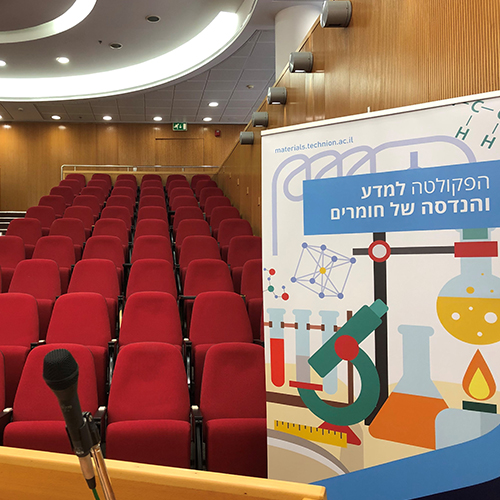
Mr. Alexander Bychkov - M.Sc. Candidate
15/06/2025
אודיטוריום ע"ש דויד וואנג, בניין מידן, קומה 3
13:30
Li-ion batteries (LIBs) are the most common portable energy devices, also used in long-term space missions. However, they are subjected to cosmic radiation, which includes high-energy charged particles, with protons (H+) being the most abundant component. Hence, understanding the influence of cosmic radiation on the degradation mechanisms of LIBs is important for securing their integrity and stability.
In this study, the effect of MeV H+ irradiation on graphitic anodes utilized in LIBs was explored and studied. The impact of three (3) MeV H+ irradiation on pyrolytic graphite was investigated via destructive (TEM, galvanostatic charge-discharge cycling together with in-situ neutron transmission measurements, and cyclic voltammetry) and nondestructive (Raman, XRD, SEM, and confocal microscopy) methods.
It was found that the incident protons penetrate into the graphitic anodes as part of the irradiation process, leading to a decrease in the recorded reversible capacity during cycling and consequently to an energy loss. The irradiation caused displacements within 1/3 of the 225 μm anode thickness, corresponding to the proton stopping range. Raman spectra indicated an increase in the accumulated damage with increased proton dose. In situ neutron transmission of the irradiated anode indicated a spatial distribution of trapped Li, in agreement with the accumulated damage profile obtained in the anode.


